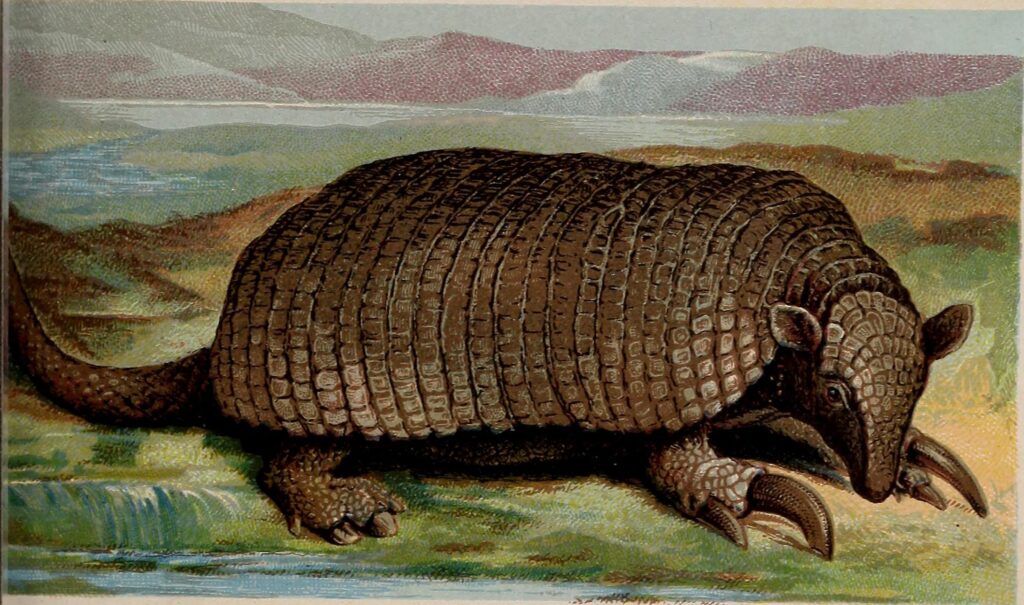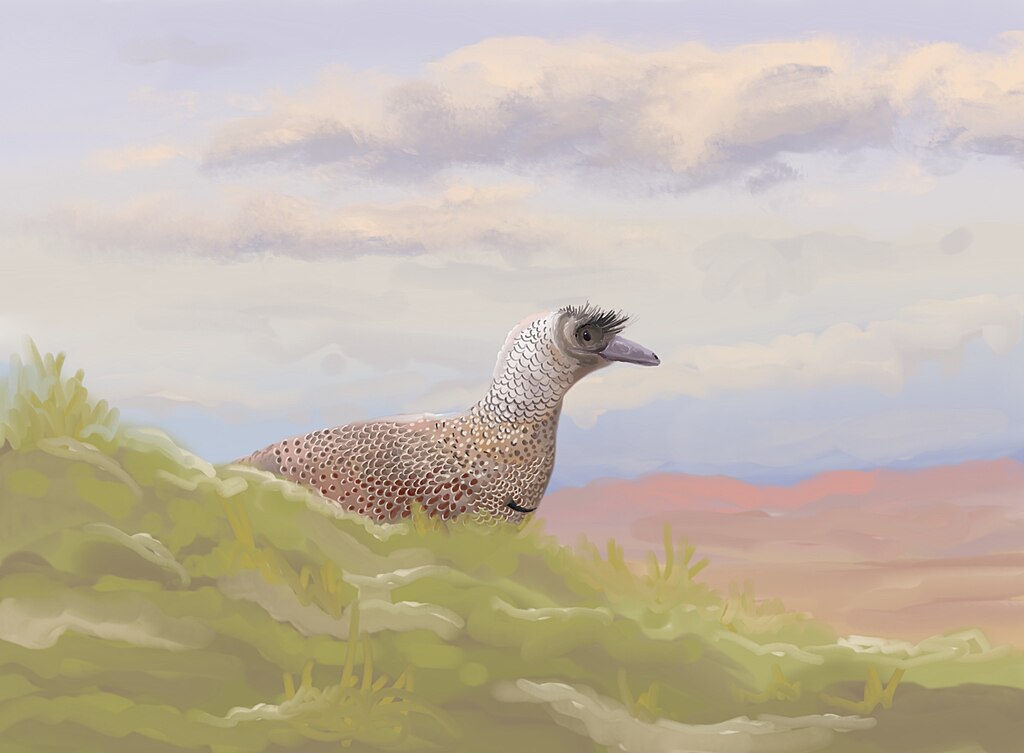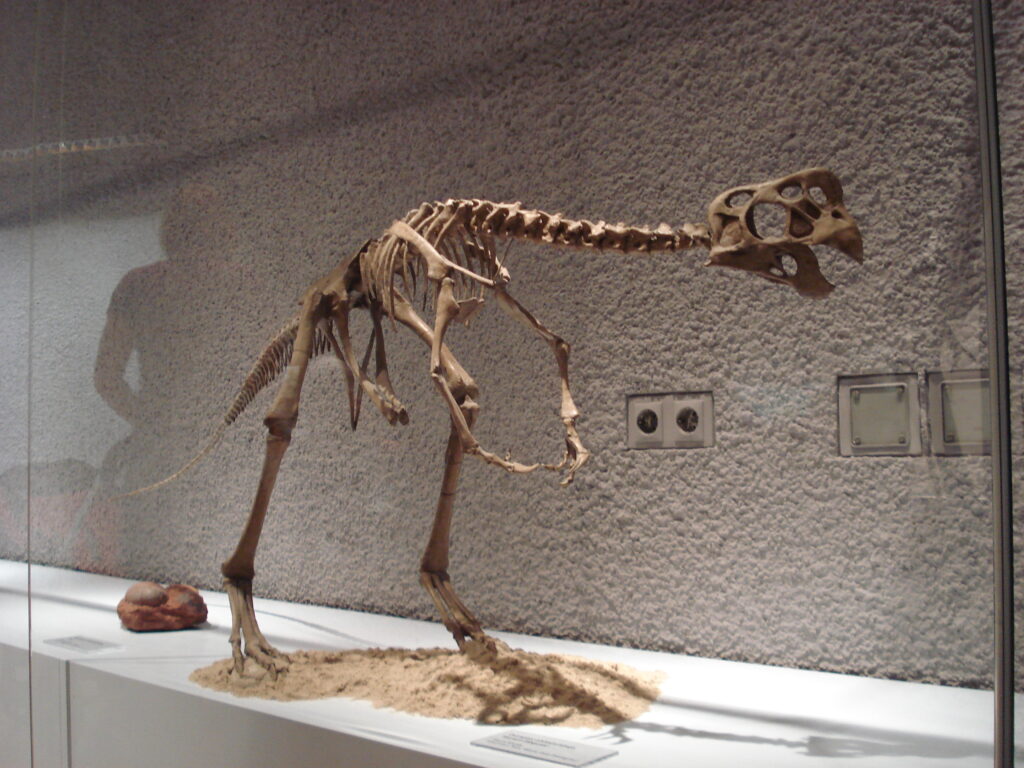In the vast timeline of Earth’s prehistoric past, few creatures capture our imagination quite like the long-necked plesiosaurs and their relatives. Among these ancient marine reptiles, Tanystropheus stands out as perhaps the most bizarre example of evolutionary experimentation. This Middle Triassic reptile possessed a neck so extraordinarily elongated that it measured approximately three times the length of its body—a proportion unmatched in the fossil record. Living approximately 242 to 235 million years ago, Tanystropheus represents one of paleontology’s most fascinating anatomical puzzles, challenging scientists to understand how such an extreme body plan could have functioned in the ancient seas. Its remarkable anatomy continues to intrigue researchers and dinosaur enthusiasts alike, offering a window into the diverse and sometimes strange adaptations that emerged during Earth’s prehistoric eras.
The Discovery of Tanystropheus
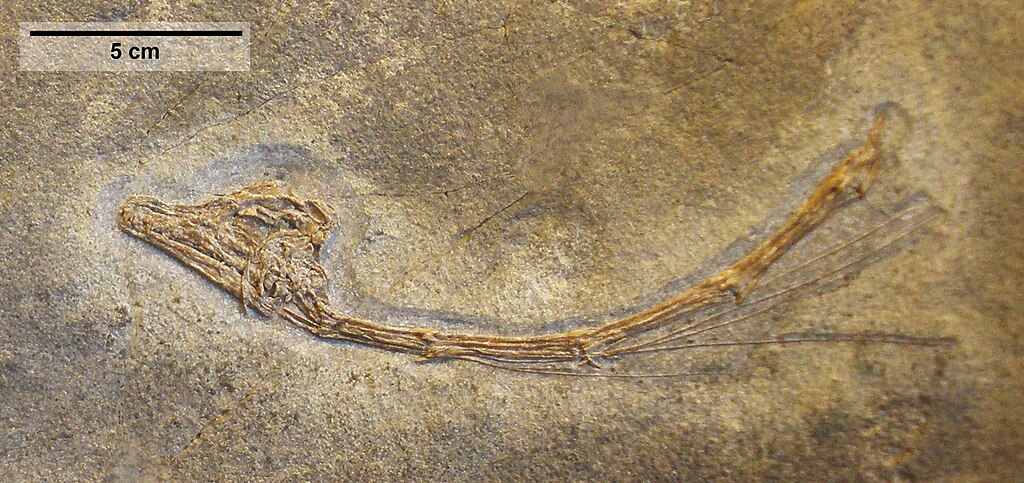
The first fossils of Tanystropheus were discovered in 1852 by paleontologist Francesco Bassani in the Monte San Giorgio region between Switzerland and Italy. Initially, scientists were so perplexed by the creature’s unusually elongated neck vertebrae that they misidentified them as wing bones of a flying reptile. It wasn’t until the early 20th century that paleontologist Friedrich von Huene correctly recognized these fossils as neck vertebrae belonging to a bizarre reptile. The most complete specimens were later excavated from Middle Triassic limestone deposits in Switzerland, providing researchers with crucial evidence about the creature’s complete anatomy. These well-preserved fossils revealed a reptile with a body plan so unusual that it forced scientists to reconsider what they thought possible in vertebrate evolution, establishing Tanystropheus as one of paleontology’s most remarkable enigmas.
Anatomical Peculiarities

Tanystropheus possessed a body structure unlike any living animal, with its most distinctive feature being its incredibly elongated neck that composed roughly three times the length of its trunk. This neck consisted of just 12-13 vertebrae, but each vertebra was extraordinarily elongated—up to 30 centimeters in length each—creating a neck that measured approximately 3 meters in the largest specimens. Despite this extreme length, the neck contained very few muscles and had limited flexibility, essentially functioning as a rigid rod. The creature’s head was relatively small and lizard-like, equipped with sharp, interlocking teeth suitable for catching slippery prey. Its body was compact with four paddle-like limbs adapted for aquatic locomotion, though debate continues about whether it spent most of its time in water or visited land. The tail was moderately long and likely assisted with balance and swimming, completing one of nature’s most peculiar anatomical designs.
Size Variations and Species
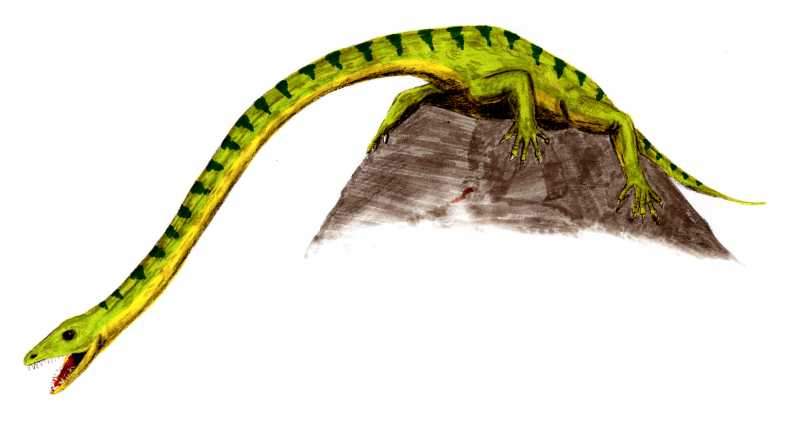
Paleontologists have identified several species within the Tanystropheus genus, with significant size variations that suggest different ecological niches. The largest species, Tanystropheus hydroides, could reach approximately 6 meters (20 feet) in total length, with adult specimens weighing an estimated 150-200 kilograms. Meanwhile, smaller specimens once thought to be juveniles have been recognized as a separate species, Tanystropheus longobardicus, which reached only about 1.5 meters (5 feet) in length. This size disparity between species has been confirmed through bone histology studies that showed the smaller specimens were indeed fully mature animals rather than juveniles of the larger species. The recognition of differently sized species coexisting in the same environments suggests that Tanystropheus species had evolved specialized feeding strategies to reduce competition, a case of niche partitioning that allowed these unusual reptiles to exploit different food resources within the same marine ecosystems.
The Evolutionary Lineage

Tanystropheus belongs to a group called Protorosauria (or sometimes classified within Archosauromorpha), reptiles that diverged from the lineage that would eventually lead to dinosaurs, pterosaurs, and crocodilians. These animals emerged during the Early Triassic period, a time of recovery and radiation following the devastating Permian-Triassic extinction event that had wiped out approximately.95% of marine species. The extreme neck elongation of Tanystropheus represents an evolutionary experiment that apparently proved successful for millions of years, though the adaptation has never been replicated to such an extreme degree since. Its closest relatives include other long-necked reptiles like Dinocephalosaurus and Macrocnemus, though none achieved the remarkable neck-to-body ratio of Tanystropheus. This evolutionary lineage demonstrates that the Triassic period was a time of experimentation in body forms, producing some of the most unusual vertebrate anatomies in Earth’s history before the rise of dinosaurs would dominate terrestrial ecosystems.
Habitat and Environment
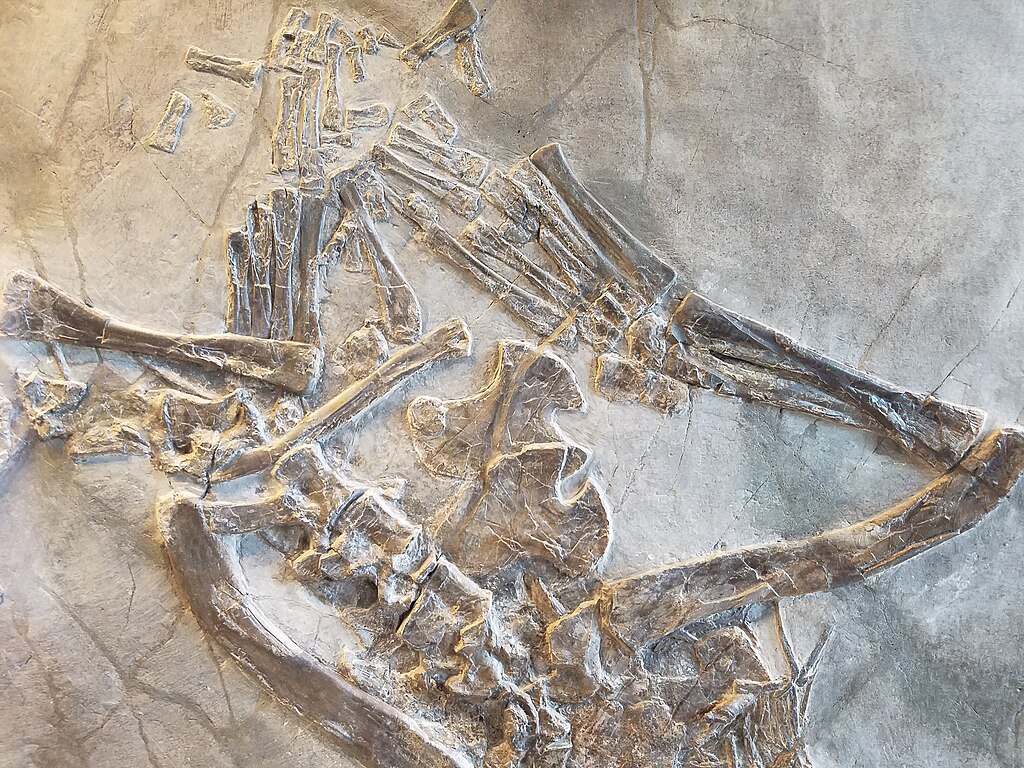
The fossil remains of Tanystropheus have primarily been discovered in marine deposits from the Middle Triassic period, particularly in the Monte San Giorgio UNESCO World Heritage site along the Swiss-Italian border. This region preserves an ancient coastal lagoon environment with restricted circulation that created ideal conditions for exceptional fossil preservation. During the Triassic period, this area was a warm, shallow sea dotted with small islands, part of the western edge of the ancient Tethys Ocean. The environmental conditions included warm, tropical waters teeming with fish, cephalopods, and other marine reptiles that would have provided ample food sources for predators like Tanystropheus. Evidence suggests that these lagoons were subject to periodic oxygen depletion in deeper waters, creating conditions that prevented scavengers from disturbing animal remains that settled on the seafloor, thus explaining the exceptional quality of the fossils discovered in these regions.
Feeding Behavior and Diet
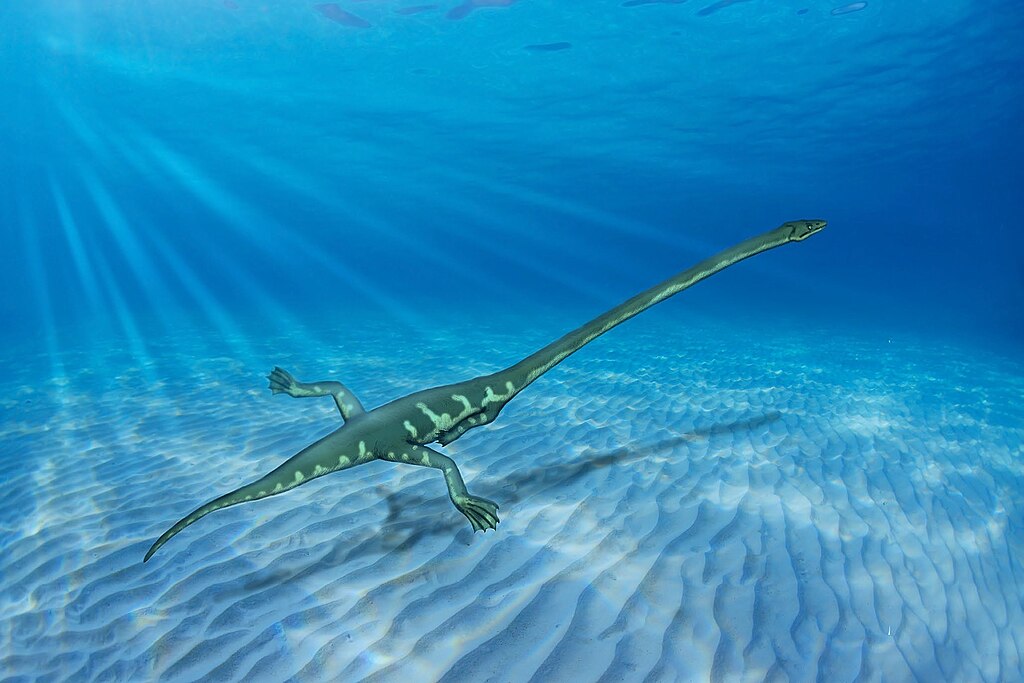
The unusual anatomy of Tanystropheus has sparked considerable debate about its feeding strategy, with recent research providing compelling evidence about its lifestyle. Studies of its skull and teeth suggest it was primarily piscivorous (fish-eating), with some specimens showing adaptations for capturing cephalopods like squid and small marine reptiles. The needle-like teeth in the front of its jaws were perfect for seizing slippery prey, while the flattened teeth further back helped process food before swallowing. Computer modeling suggests that Tanystropheus likely used its extraordinarily long neck to approach prey stealthily from a distance, using minimal movement to avoid detection. Rather than actively chasing prey through the water, it probably employed an ambush strategy—floating motionless near the surface with its small head dipping below to spot prey, then making quick strikes from a distance that other predators couldn’t match. This specialized hunting technique would have given Tanystropheus a unique ecological niche with little competition from other marine predators of its time.
The Aquatic vs. Terrestrial Debate

One of the most persistent debates surrounding Tanystropheus concerns whether it was primarily an aquatic animal or if it spent significant time on land. Early interpretations suggested it might have been a shore-dwelling reptile that used its long neck to fish from coastlines, much like a heron. However, more recent biomechanical studies have strongly indicated that Tanystropheus was predominantly aquatic. The creature’s limb proportions and structure show adaptations for swimming rather than efficient terrestrial locomotion, with paddle-like feet that would have been awkward on land. Computer simulations demonstrate that supporting its extremely long neck would have been problematic on land due to gravitational stress, whereas the buoyancy of water would have offset this issue. Additionally, the rigid nature of its neck would have limited mobility on land, making it difficult to raise its head high enough to scan for predators. The current scientific consensus suggests Tanystropheus was a specialized aquatic hunter that may have only occasionally ventured onto land, perhaps for activities like egg-laying.
The Mechanical Challenge of a Super-Long Neck
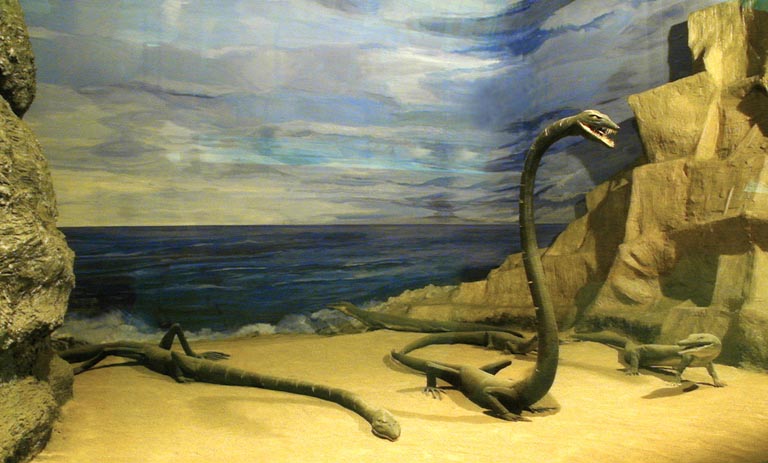
The extreme neck elongation of Tanystropheus presented significant biomechanical challenges that required specialized adaptations to overcome. Each neck vertebra evolved a unique structure with reduced neural spines and extremely elongated central bodies, creating a lightweight but strong support system. Unlike the flexible necks of plesiosaurs or modern birds, Tanystropheus had limited lateral mobility due to interlocking vertebral joints that restricted bending while providing structural stability. Biomechanical studies suggest the neck contained relatively little musculature and functioned more like a rigid fishing rod than a flexible appendage. This design would have prevented the neck from buckling under its own weight when extended—a crucial adaptation for an animal with such extreme proportions. The creature likely used small movements of its head rather than neck-bending to track and capture prey, with the elongated neck primarily serving to increase strike distance rather than enhance flexibility or reach.
Recent Research Breakthroughs

In 2020, a groundbreaking study published in Current Biology revolutionized our understanding of Tanystropheus by using computed tomography (CT) scanning to examine crushed fossil skulls in unprecedented detail. This research conclusively demonstrated that the large and small forms of Tanystropheus were indeed separate species rather than juveniles and adults of the same species. The study revealed that the larger species (T. hydroides) had adaptations for marine hunting, including nostrils positioned on top of the snout for breathing while partially submerged. Another significant breakthrough came from analyzing growth rings in fossil bones, similar to tree rings, which confirmed that even the smallest specimens were fully mature animals rather than juveniles. Additional research using computer simulations has helped scientists understand how Tanystropheus would have moved and hunted, suggesting it was a specialized aquatic ambush predator that used its extraordinary neck to strike at prey from a distance. These recent advances in technology and methodology continue to shed new light on this remarkable animal, transforming our understanding of its biology and ecological role.
Comparison to Modern Animals
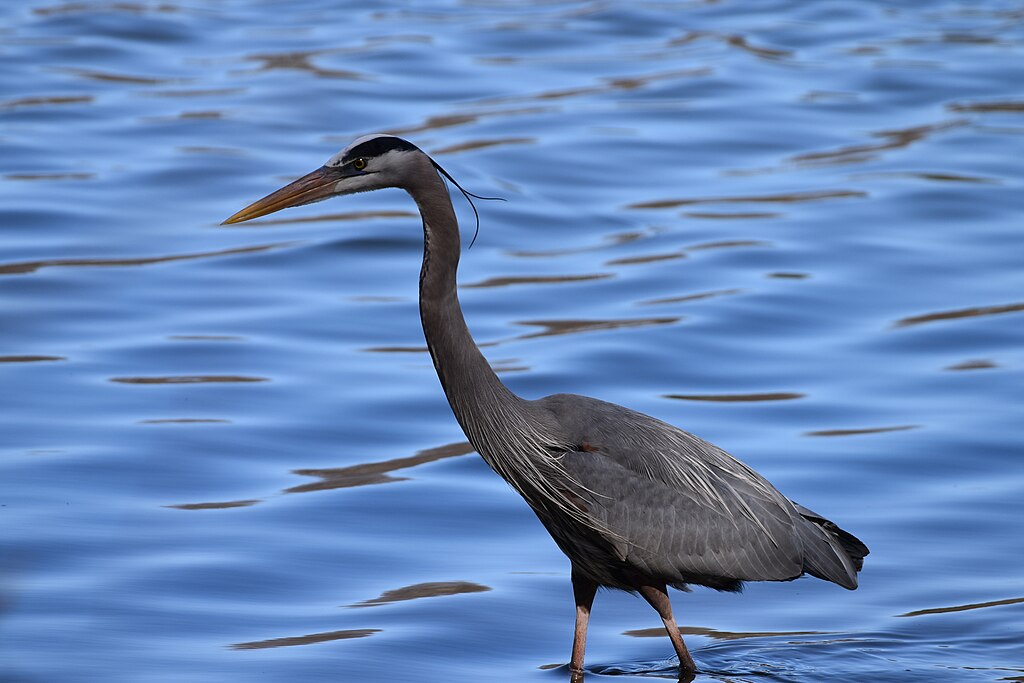
No living animal approaches the extreme neck-to-body proportions exhibited by Tanystropheus, making it difficult to find perfect modern analogues for its lifestyle. However, certain contemporary animals offer partial comparisons that help illuminate aspects of its biology. Herons and egrets employ a somewhat similar fishing strategy, remaining motionless before making lightning-fast strikes with their long necks, though their necks are far more flexible than that of Tanystropheus. Modern crocodilians share the ability to float nearly submerged with just their eyes and nostrils above water, similar to how Tanystropheus might have hunted. The rigid neck structure might be loosely compared to the stiffened necks of certain kingfishers that plunge directly into water from above. Among reptiles, certain snake-necked turtles like the Eastern long-necked turtle (Chelodina longicollis) possess elongated necks used for rapid-strike predation, though even these remarkable modern animals have neck proportions far less extreme than Tanystropheus. These partial comparisons help scientists reconstruct the lifestyle of this unique prehistoric reptile while emphasizing just how anatomically exceptional it truly was.
Extinction and Legacy
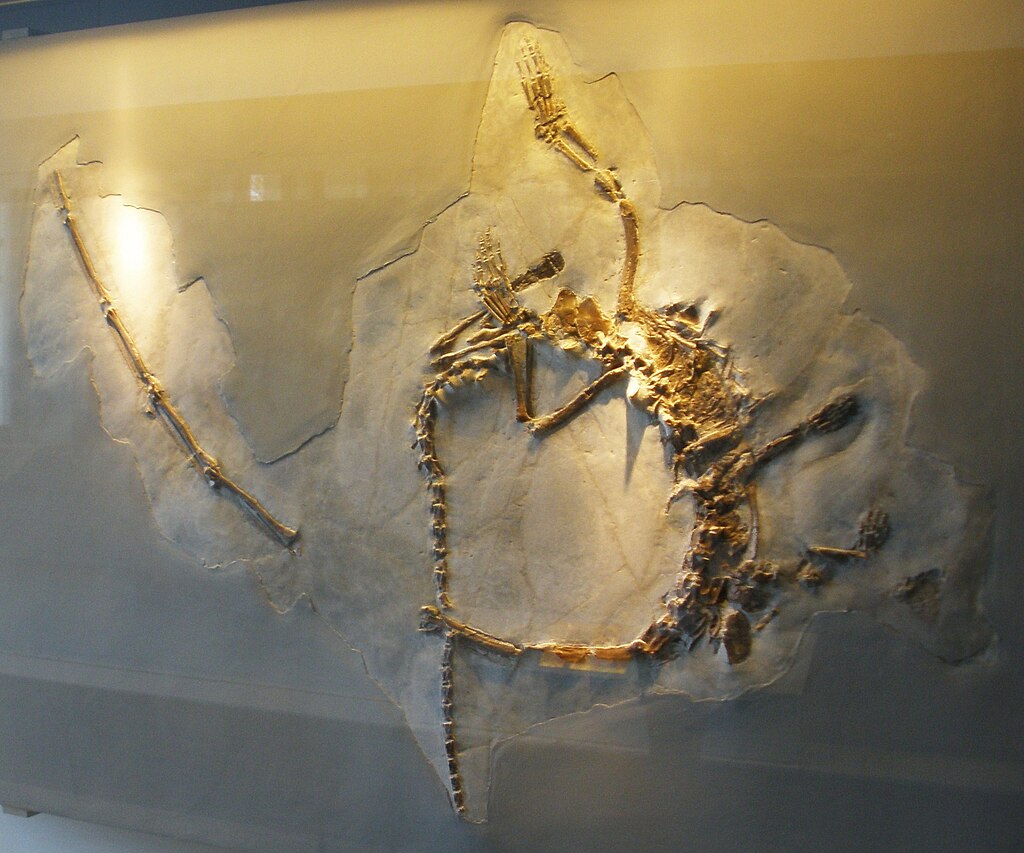
After thriving for several million years during the Middle Triassic period, Tanystropheus and its relatives disappeared from the fossil record by the Late Triassic, approximately 230 million years ago. Their extinction coincided with significant ecological changes in marine environments and the rise of more advanced marine reptiles like ichthyosaurs and early plesiosaurs, which may have outcompeted these specialized hunters. The extreme neck adaption of Tanystropheus represents an evolutionary experiment that was temporarily successful but ultimately reached an anatomical dead end. However, the legacy of Tanystropheus continues in modern paleontological research, where it serves as an important case study in the evolution of extreme adaptations and specialized feeding strategies. Its unique anatomy demonstrates the remarkable diversity of body plans that evolved during the Triassic period and challenges scientists to understand the limits and possibilities of vertebrate evolution. Though extinct for over 230 million years, Tanystropheus remains one of paleontology’s most fascinating examples of evolutionary experimentation.
Cultural Impact and Popular Representation

Despite its remarkable anatomy, Tanystropheus has received less attention in popular culture than dinosaurs and other prehistoric creatures, though its bizarre appearance has captivated those who encounter it. The creature has appeared in numerous paleontology books and museum exhibitions, where reconstructions of its improbable anatomy often generate astonishment among visitors. Tanystropheus has been featured in several documentary series about prehistoric life, including BBC’s “Walking with Monsters,” where its strange proportions and hunting behavior were dramatically portrayed. It occasionally appears in children’s books about prehistoric animals, where it typically generates fascination due to its extraordinary neck. Several museums around the world display Tanystropheus fossils or reconstructions, including the Natural History Museum of Milan and the Paleontological Museum of Zurich, where visitors can appreciate the remarkable proportions of this creature. As paleontological knowledge continues to advance, this extraordinary reptile increasingly serves as an ambassador for the strange and wonderful diversity of prehistoric life, demonstrating that reality often exceeds even the most imaginative fictional creations.
Unanswered Questions in Tanystropheus Research

Despite significant advances in our understanding of Tanystropheus, several important questions remain unanswered, driving ongoing research into this fascinating creature. Paleontologists continue to debate aspects of its reproductive biology, including whether it gave birth to live young in water (viviparity) like many marine reptiles or returned to land to lay eggs. The specific locomotion method of Tanystropheus remains somewhat speculative, with questions about how efficiently it could have swum with such an unwieldy neck and how it might have maneuvered in water. Researchers also continue to investigate whether different species of Tanystropheus occupied different ecological niches or inhabited separate geographical regions to avoid competition. The processes that drove its evolution toward such extreme neck elongation remain incompletely understood, as do the specific selective pressures that eventually led to its extinction. These unresolved questions ensure that Tanystropheus remains an active area of paleontological research, with new discoveries and analytical techniques continuing to refine our understanding of one of nature’s most remarkable anatomical specializations.
The extraordinary Tanystropheus represents one of evolution’s most extreme anatomical experiments—a creature whose neck stretched three times longer than its body, creating proportions unmatched in the fossil record or modern animal kingdom. From its misidentified beginnings to recent CT-scanning breakthroughs, this Middle Triassic marine reptile continues to fascinate paleontologists and challenge our understanding of what’s possible in vertebrate evolution. Though extinct for over 230 million years, Tanystropheus serves as a powerful reminder that prehistoric life often evolved in unexpected and remarkable directions, producing creatures that seem almost impossibly specialized to modern eyes. As research continues, this extraordinary reptile offers valuable insights into evolutionary processes, specialized adaptations, and the diverse forms that thrived in Earth’s ancient seas long before the age of dinosaurs began.

